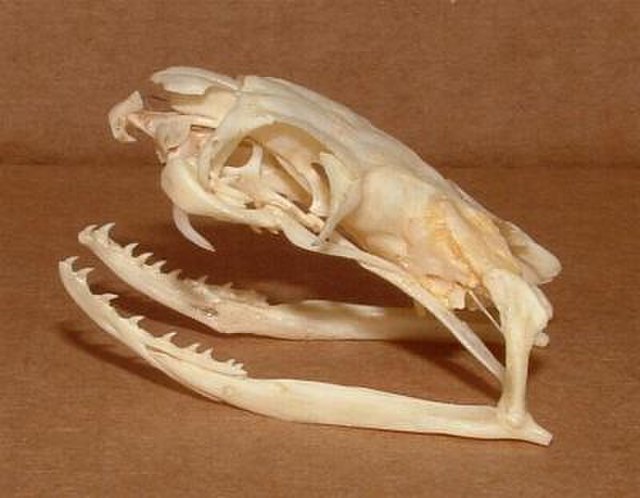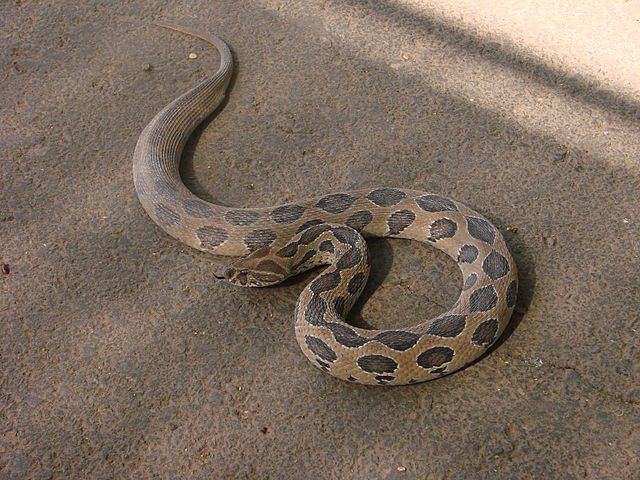Pseudonaja is a genus of highly venomous elapid snakes native to Australia. Species of this genus are known commonly as brown snakes and are considered to be some of the most dangerous snakes in the world; even young snakes are capable of delivering a fatal envenomation to a human.
Pseudonaja
A dugite in Joondalup, Western Australia
An eastern brown snake
Venomous snakes are species of the suborder Serpentes that are capable of producing venom, which they use for killing prey, for defense, and to assist with digestion of their prey. The venom is typically delivered by injection using hollow or grooved fangs, although some venomous snakes lack well-developed fangs. Common venomous snakes include the families Elapidae, Viperidae, Atractaspididae, and some of the Colubridae. The toxicity of venom is mainly indicated by murine LD50, while multiple factors are considered to judge the potential danger to humans. Other important factors for risk assessment include the likelihood that a snake will bite, the quantity of venom delivered with the bite, the efficiency of the delivery mechanism, and the location of a bite on the body of the victim. Snake venom may have both neurotoxic and hemotoxic properties. There are about 600 venomous snake species in the world.
The lateral view of a king cobra's skull showing fangs
The world's most venomous snake, based on LD50, is the inland taipan of Australia.
Common krait (Bungarus caeruleus)
Russell's viper (Daboia russelii)







